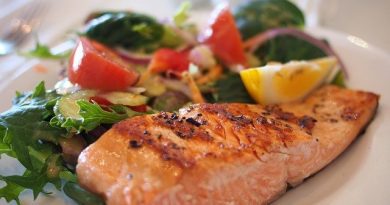There’s a Common Denominator with All Trendy Diets
With so many diets floating around today it’s difficult to keep track of all of them or even know what works and what doesn’t. You have low-fat, low-sugar, low-carb, high-protein, high-fat, the list goes on and on. It seems as if each day something new comes out in the news about one diet being better than another, and then the next day more conflicting information is published. It’s enough to make your head spin. So, how can you really know what will help you drop those unwanted pounds?
Disclaimer: This article is for informational purposes only and is not meant to treat or diagnose any condition. It is recommended that you speak with your doctor before starting any exercise program, changing your daily nutrition, or adding any supplements to your regimen.
Table of contents

What Diet is Going to Work for You?
If you are looking for me to recommend a diet to you that is going to work, you’re unfortunately not going to find it in this article. However, I will explain what you should be more concerned with.
Most people are under the impression that there is some cookie-cutter diet out there that will work for everyone — after all, that’s what the people behind these diets want you to believe, right? They want to sucker you in and think that their diet will work perfectly for you and you’ll never have to worry about trying another diet out after this one. It’s the holy grail of diets! Well, that’s a lie. What researchers and nutritionists should be looking to put out are diets that are specific and individualized for each person, not the masses. No two people are the same, and for that reason, not every diet or grouping of certain foods and macronutrients will work for everyone. These people are looking at a broad spectrum of the masses and not at individuals like they should be.
What is the Common Denominator with All Diets?

Let’s take a step back and look at what all diets around the industry have in common — they all recommend that at the end of the day you be in a caloric deficit. Generally, what this leaves many people with is a feeling of hunger throughout the day. After a long day at work, you simply want to kick back and relax at night, right? What does that mean for many American’s? Sitting in their favorite chair with a beverage and some snacks at night for several hours in front of the idiot-box. Not only will they most likely end up binge eating because they are starving from their restriction in calories, but sitting in front of the television at night can lead to overconsumption of food and beverages as it relates to “comfort eating” and not paying attention to portion sizes since you are paying more attention to your favorite show than you are how much you are eating.
In order to feel full, you need satiety. How can this be accomplished? Consuming protein or foods high in fiber would be a good start. So, how does this relate to dieting? It’s actually quite simple — eat more protein and foods high in fiber. This will help you feel full even when you calorically are in a deficit. You can also include snack items such as protein bars or protein shakes into your plan rather than consuming unhealthy snack options.
The Government Giving a Helping Hand?

Eh, not really. Without getting all political and completely sidetracking this article, the government has laid out some nutrition guidelines that they believe we should all adhere to. They recommend that we eat 45-65% of our calories from carbohydrates, 10-35% from protein, and 20-35% from fats. This is what the government feels we need to stay within in order to maintain health. Obviously, you would have to do the math yourself if you’re following a certain diet to see where that falls individually with what you are following, but if you look at most diets today, they fall within this range for the most part. Sure, you have some outliers such as the Atkins diet where you’re taking in around 50% from fats, 35% from protein, and 15% from carbohydrates. You also have the diet most Crossfitter’s follow such as the Paleo diet (or some version of it) where most are calling for around 40% of your calories coming from fats, 30% from proteins, and the other 30% coming from carbohydrates.
Related Article: Unlocking The Sattvic Diet — An Ayurvedic Guide To Wellness
While I appreciate what the government is trying to do here, I still hate to be so generic with nutrition guidelines. Sure, there is a range, but again there isn’t one set range that works for everyone.
What’s in Every Trendy Diet?
While it may seem like every diet you look at is the complete opposite of what the previous one recommended, all diets do seem to have some things in common. All diets out there today are promoting the consumption of vegetables as well as minimizing sugars and refined grains. Unfortunately, these three items that seem to be what’s holding back many American’s from slimming down their waistline and dropping body fat (along with increasing the risk factors associated with many different illnesses, diseases, and cancers).

When we look at vegetables today, many people are skipping them all together or they are choosing ones that aren’t as nutrient dense as others or have other health properties. Look at broccoli, for example, this vegetable is full of nutrients and fiber which is something many American’s aren’t getting enough of and for that reason aren’t feeling satiated after their meals. Fiber, as well as green vegetables for some reason, seem to be American’s kryptonite. It’s as if people start to die a little when they see them on their plate.
With sugars and refined grains, it’s hard not to find these in a normal American’s diet. We praise soda, sugary beverages, candy, ice cream, and everything sweet that we can fit into our mouths. Refined grains come in the form of white bread that many use for the bookends of their sandwiches, white rice that goes along with many dishes we create for dinners, and white flour which is used in many types of baked goods. These are all things that we should stay away from when battling the bulge.
If we can change the foods we eat, we can all reap the benefits of better health. Poor health doesn’t just affect those who suffer from it, but also everyone around them. Minor changes to someone’s diet can make a huge difference in their health and weight.
So, rather than looking for the magic diet trend out there, look at what you are eating and minimize the sugars and refined grains — replace them with healthy nutrient dense vegetables and add in more healthy fats and proteins into your diet. It’s ok to play with your macronutrients to see how your body reacts. No one knows your body better than you. So, experiment a little and see how your body handles different ratios of macronutrients. When you find what works for you, stick with it.
Hold back from jumping on the bandwagon with all the overhyped diet trends. Consistency is needed when trying to lose weight. Yo-yo diets simply leave people frustrated with unrealistic expectations. When you peel back all of their layers, they all are pretty much promoting the same things in the end. So, skip all the BS and find what works for YOU.


*Disclosure: This article may contain affiliate links or ads, which means we earn a small commission at no extra cost to you if you make a purchase through these links. These commissions help support the operation and maintenance of our website, allowing us to continue producing free valuable content. Your support is genuinely appreciated, whether you choose to use our links or not. Thank you for being a part of our community and enjoying our content.
PLEASE CONSIDER SHARING THIS ON YOUR SOCIAL MEDIA TO HELP OTHERS LEARN MORE ABOUT THIS TOPIC.





